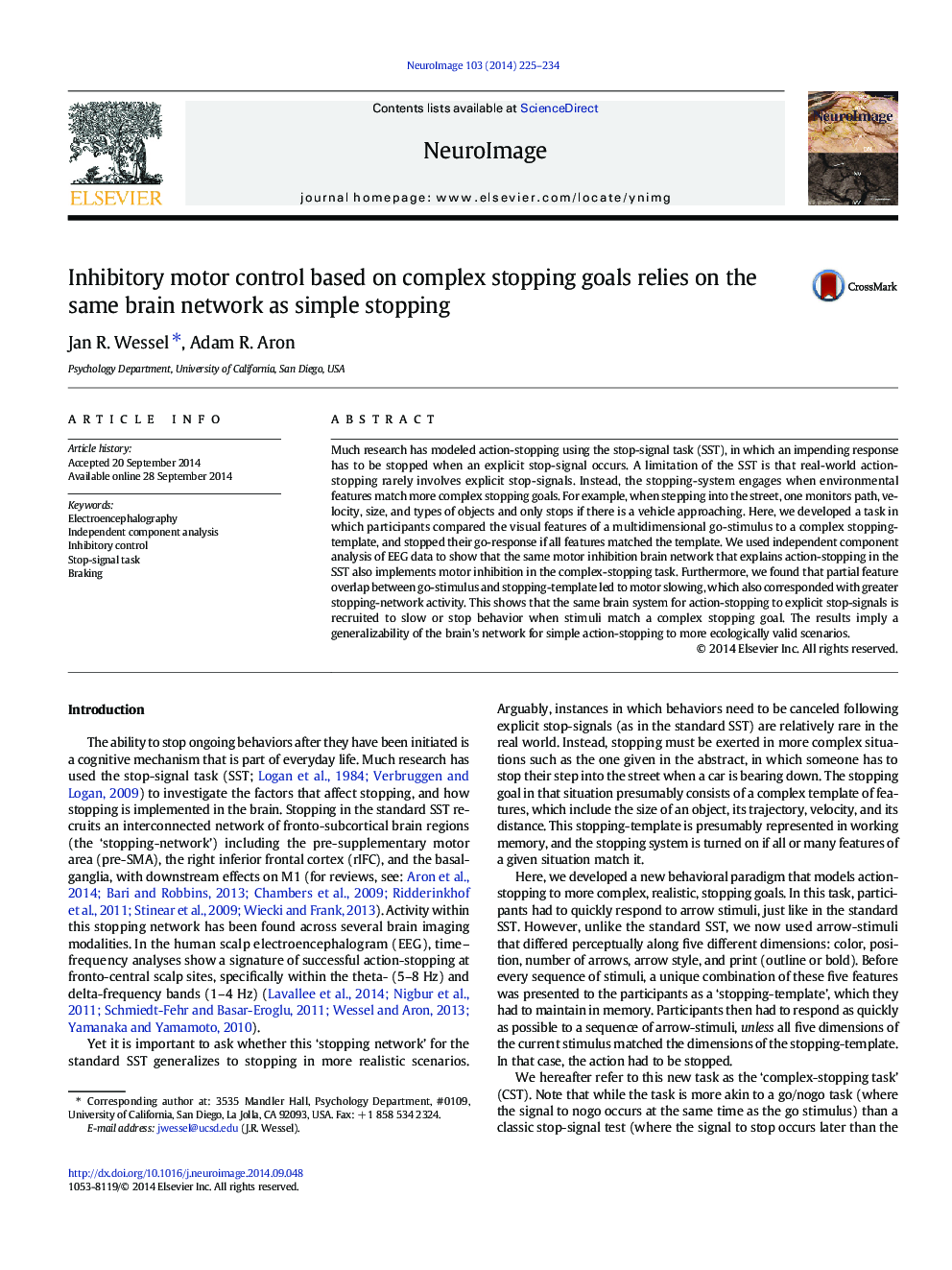| کد مقاله | کد نشریه | سال انتشار | مقاله انگلیسی | نسخه تمام متن |
|---|---|---|---|---|
| 6025729 | 1580904 | 2014 | 10 صفحه PDF | دانلود رایگان |
- We developed a task that required action-stopping to a complex feature-template.
- EEG activity in a simple stop task network explained stopping in the complex stop task.
- EEG activity of this network also explained RT slowing for partial feature matches.
- A common brain system underlies both simple and more realistic forms of stopping.
Much research has modeled action-stopping using the stop-signal task (SST), in which an impending response has to be stopped when an explicit stop-signal occurs. A limitation of the SST is that real-world action-stopping rarely involves explicit stop-signals. Instead, the stopping-system engages when environmental features match more complex stopping goals. For example, when stepping into the street, one monitors path, velocity, size, and types of objects and only stops if there is a vehicle approaching. Here, we developed a task in which participants compared the visual features of a multidimensional go-stimulus to a complex stopping-template, and stopped their go-response if all features matched the template. We used independent component analysis of EEG data to show that the same motor inhibition brain network that explains action-stopping in the SST also implements motor inhibition in the complex-stopping task. Furthermore, we found that partial feature overlap between go-stimulus and stopping-template led to motor slowing, which also corresponded with greater stopping-network activity. This shows that the same brain system for action-stopping to explicit stop-signals is recruited to slow or stop behavior when stimuli match a complex stopping goal. The results imply a generalizability of the brain's network for simple action-stopping to more ecologically valid scenarios.
Journal: NeuroImage - Volume 103, December 2014, Pages 225-234
